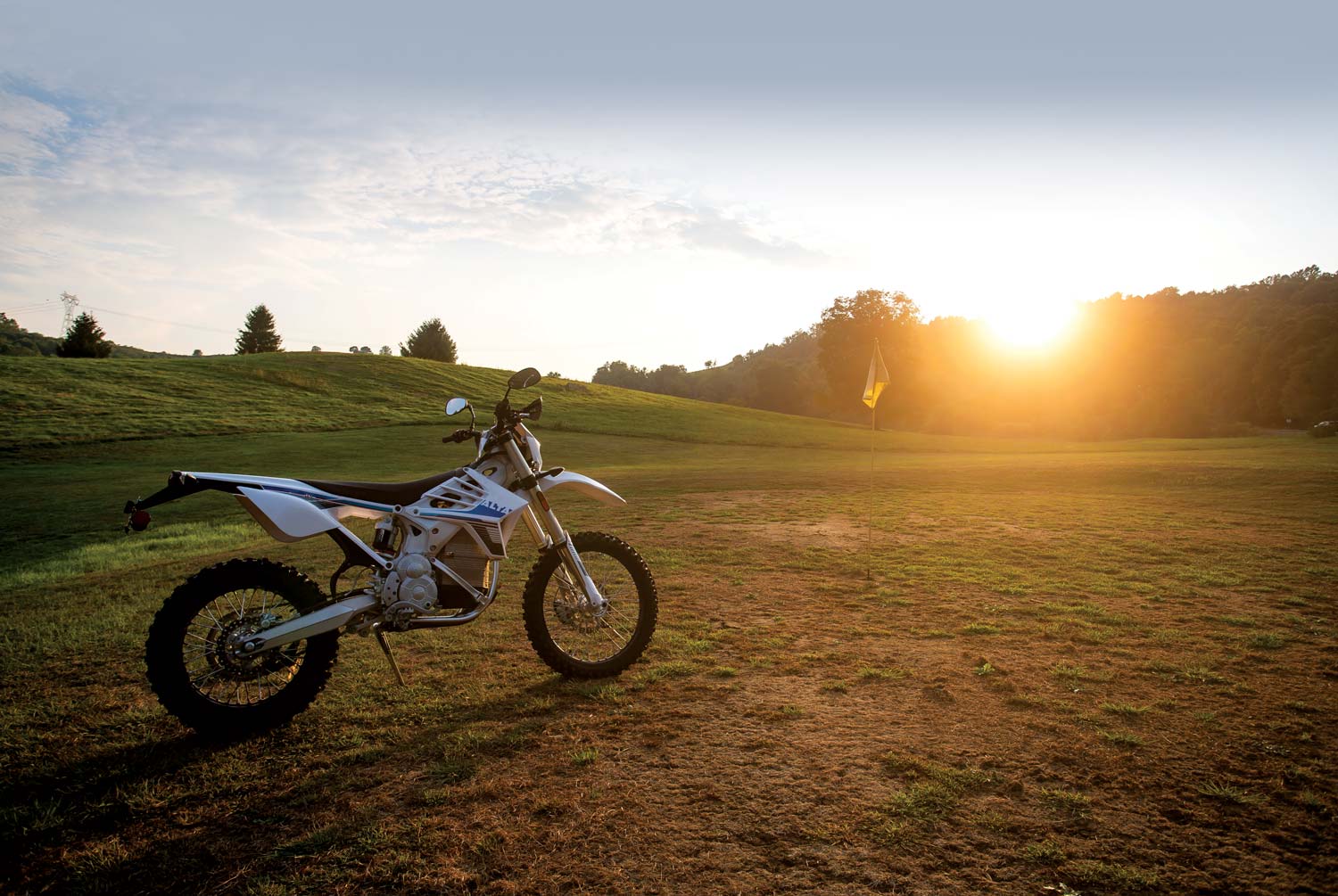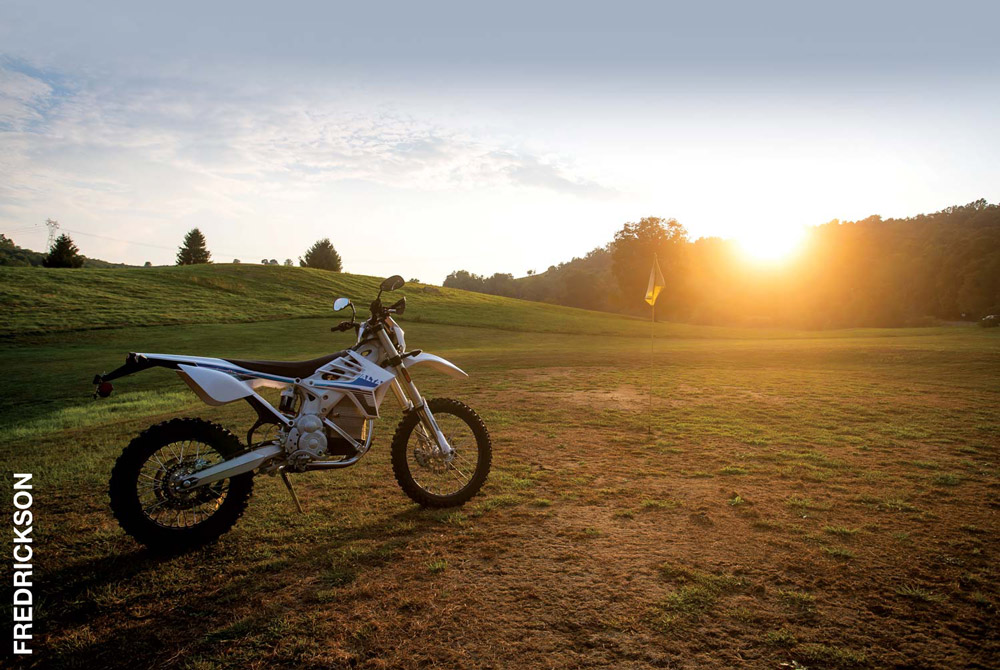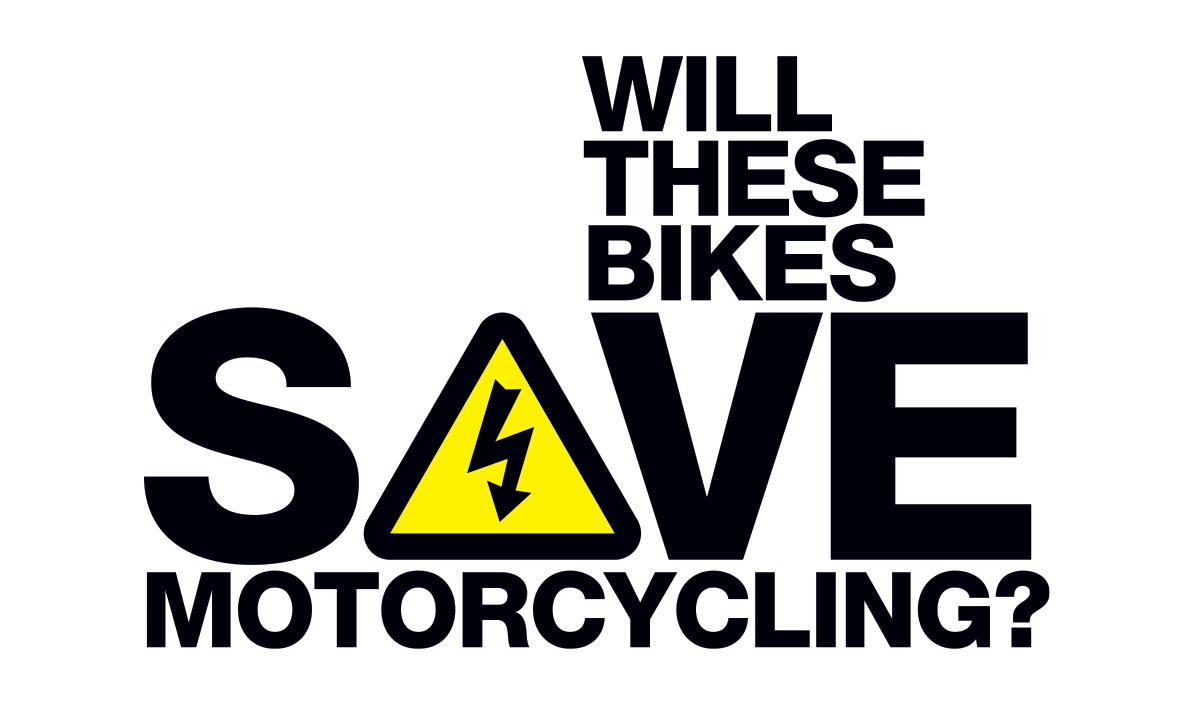
The electric-versus-gasoline argument is still going, though. You just have to go and listen at the kids’ table.

The electric-versus-gasoline argument is still going, though. You just have to go and listen at the kids’ table.

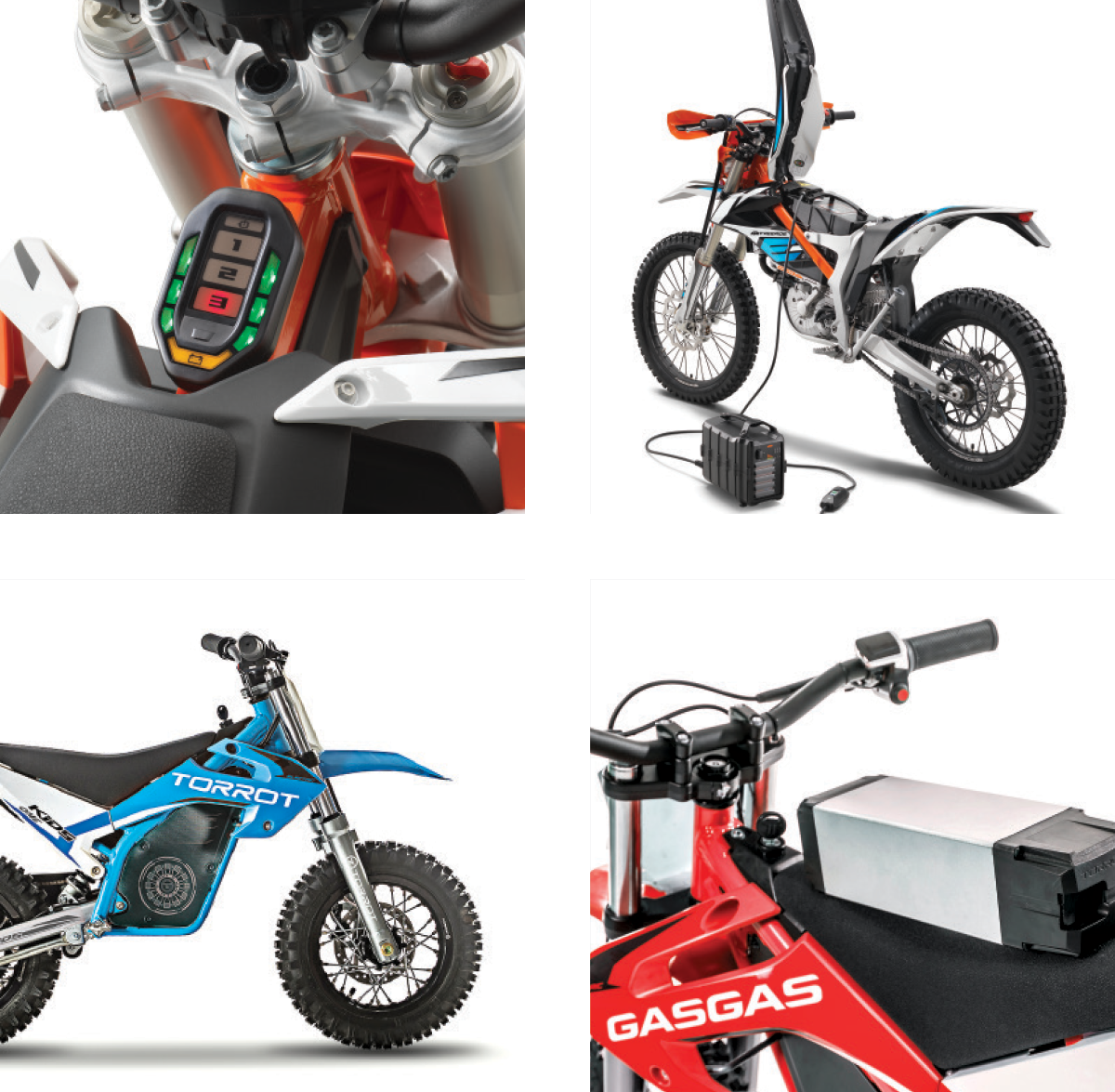
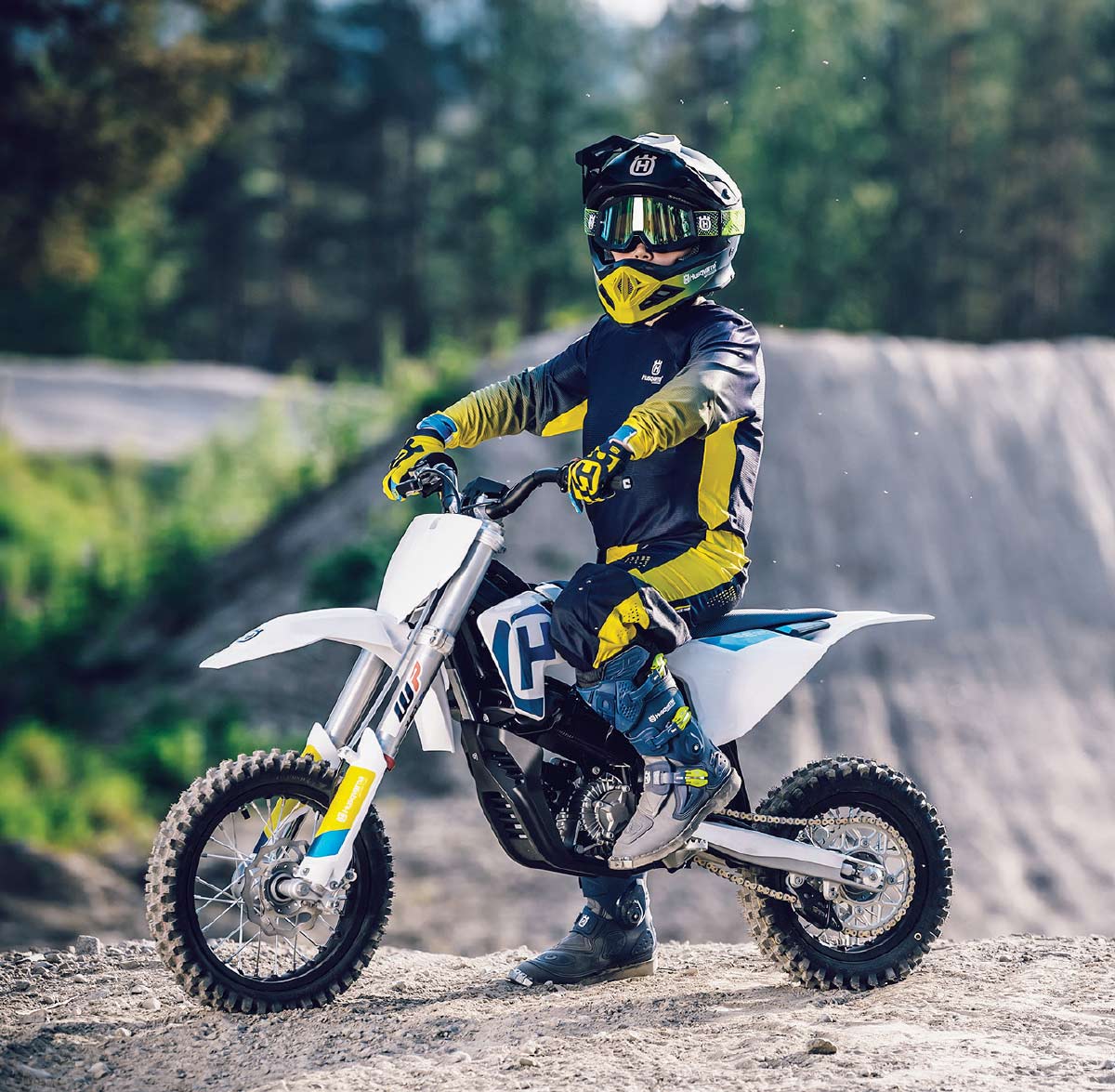
 t’s a lot harder to get older riders to change,” says Tom Moen, the KTM Group marketing and communications manager, when asked about KTM using a minicycle as its first full-on foray into electric mobility. “Kids are curious.”
t’s a lot harder to get older riders to change,” says Tom Moen, the KTM Group marketing and communications manager, when asked about KTM using a minicycle as its first full-on foray into electric mobility. “Kids are curious.”
In October 2017, KTM CEO Stefan Pierer revealed that electric dirt bikes will eventually replace its 50cc two-strokes. The 2020 KTM SX-E 5, available in dealers right about now, is the real kickoff.
As far as any environmental implications, don’t even consider it. Dirt bike companies know the green movement doesn’t really play to this audience, so electric will have to sell on performance, not sustainability. Alta never played up the environmental aspect of its bikes either—it just wanted to prove electric was faster than gas, just like Tesla is trying to do with the Ludicrous Speed setting in its electric cars.
To that end, KTM is built on the Ready to Race tagline, and that complicates things. First, KTM needs to create or find a class to race its bike, and then it needs to convince parents to compete in that class. It’s such a complicated issue that KTM competitor Cobra became a friend. Both brands see an electric future, so they’re working together to help that transition.
“I was on the AMA board, and my big push was to do this differently so we don’t have bad decisions,” says Sean Hilbert, president of Cobra Moto, which will launch its CX-E5 as a 2021 model. “The four-stroke versus two-stroke displacement parity, or Honda’s CRF150 just showing up and saying, ‘Hey, by the way, we’re doing it this way,’ I witnessed all of that stuff, and I wanted to go about it in a way that’s more productive.”
Hilbert says he met with KTM two years ago at the Anaheim Supercross. Meetings with Rob Dingman of the American Motorcyclist Association and Tim Cotter of MX Sports at the AIMExpo trade show helped. (Full disclosure: MX Sports is a sister company of this magazine, and producer of the Rocky Mountain ATV/MC AMA Amateur National Motocross Championship at Loretta Lynn Ranch.) The unified goal of both KTM and Cobra is to educate the racing rule makers so they can make quicker and better decisions on electric motocross racing.
In a perfect world, the racing rules would time out for mainstream availability of the bikes. Gas Gas, a Spanish brand owned by parent company Torrot, has sold a 50cc-sized electric dirt bike for two years now (yes, ironically, this is an electric dirt bike with the Gas Gas logo on it). Mark Berg, operations officer for Torrot/Gas Gas North America, tells us he knows riders who weren’t even allowed to enter small local races on the bike, even if they volunteered to ride only as an exhibition. Berg has not pushed the bike from a marketing standpoint, hoping that companies with more industry horsepower can make their path easier. Plus, a better, second-generation bike should be available around January anyway. Berg believes it will retail for significantly less than KTM’s SX-E 5, which Moen says will cost several hundred dollars more than a gas-powered 50 SX. The 2020 50 SX has an MSRP of $4,349.
That would put the SX-E 5 near the $5,000 mark. At that price, you’re deep into the Ready to Race market. That’s a serious group.
The electric market has to skew not to today’s eight-year-old ripper but to the three-year old just learning to ride. That’s already happening via the revolutionary Stacyc bike.
Ryan Ragland is a former motocross racer-turned-KTM factory mechanic who later finished his engineering degree and became part of KTM’s R&D department. The Stacyc has no connection to that, though. Ragland left KTM to take a job designing medical devices. In his spare time, he cobbled together a Strider balance bike with a chain drive, an electric drill motor, and some RC car batteries. His three-year old son, Robbie, wanted to ride but was simply too small for the venerable Yamaha PW50. The crude device worked, and as soon as his neighbors saw it around the cul-de-sac, they wanted one too. Ragland joined up with a few fellow engineers from the medical-device company to make production and brand plans.
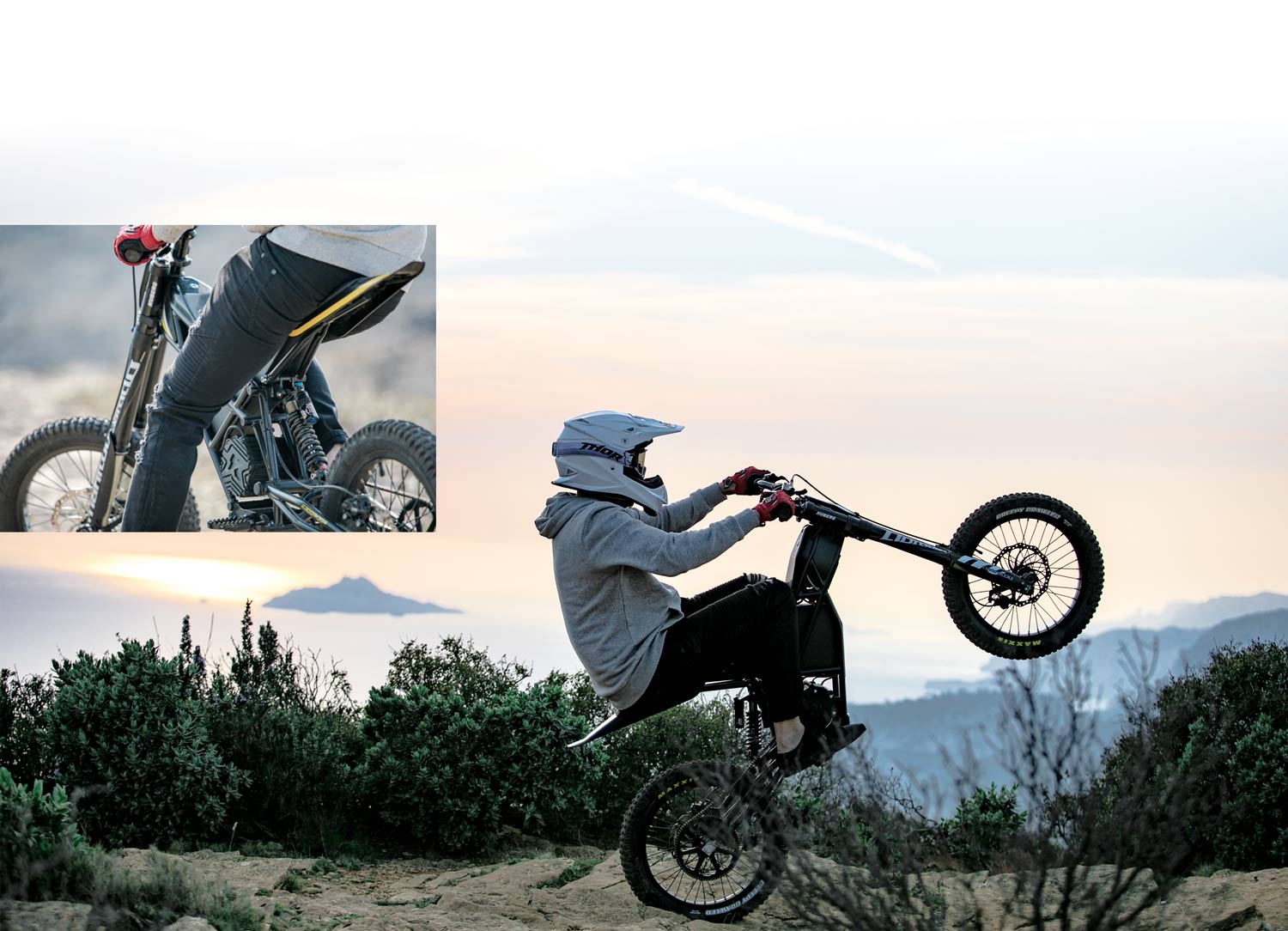
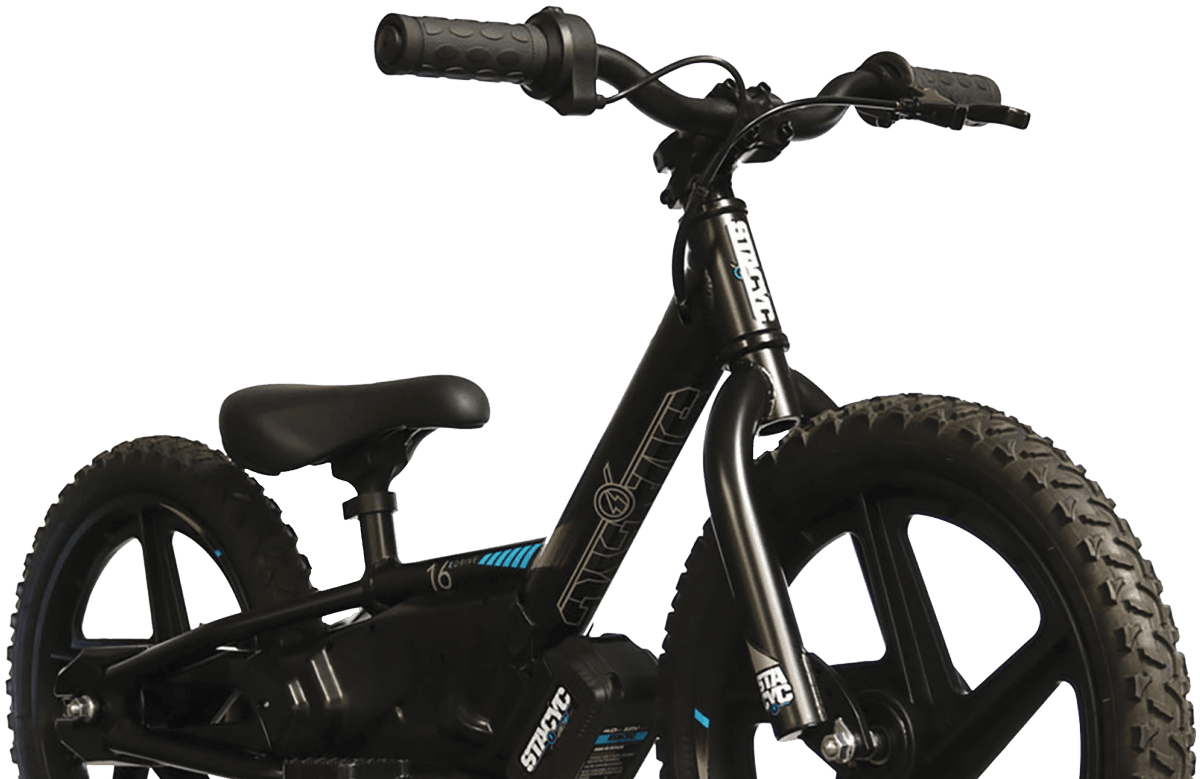
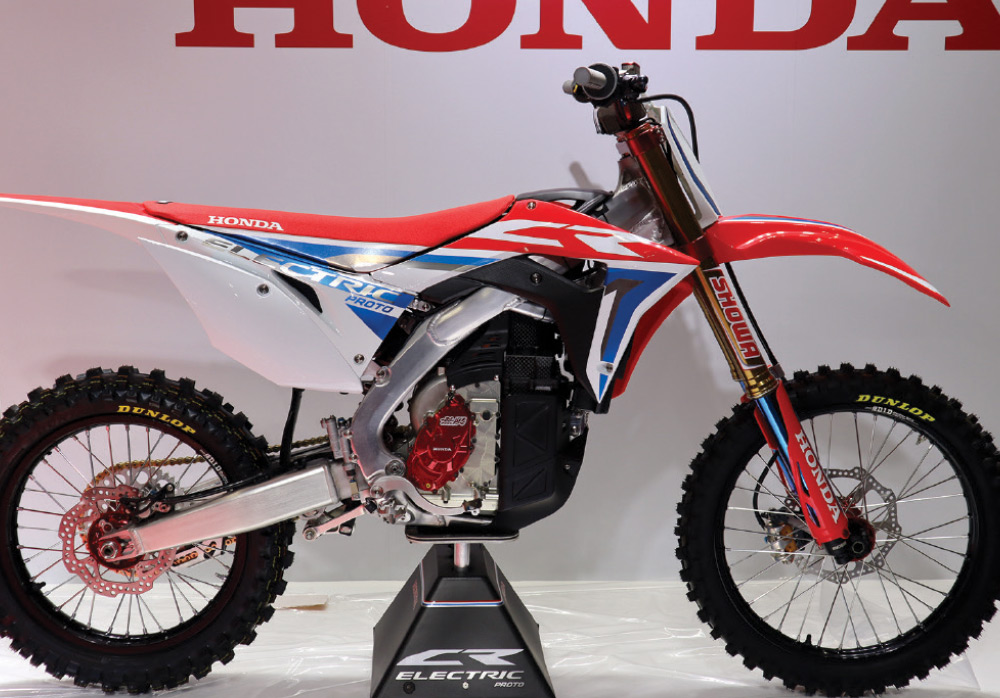
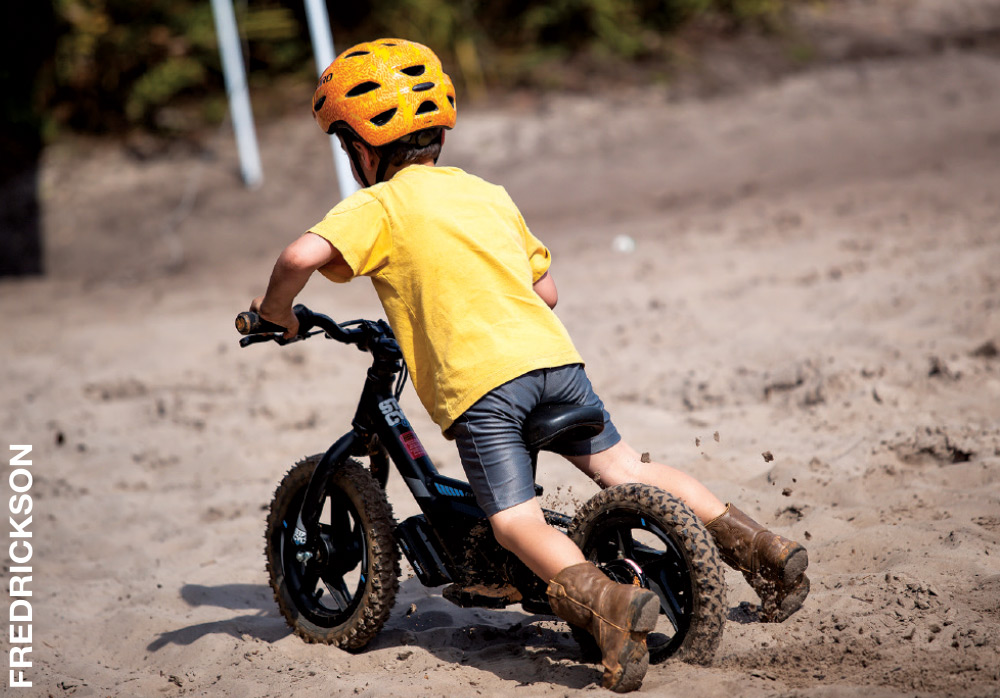
“He was my old boss, and I had left for a reason!” Ragland says now with a laugh. “So I grabbed a beer, knocked on his door, and said, ‘Hey what’s going on with you?’”
Burleson offered advice and said the goal should be selling 25,000 Stacyc bikes by 2020. That was an ambitious target, but the message resonated whenever Ragland brought it back to his original goal of sharing the love of two wheels with his own son. It was too noble a goal not to try. The first production bikes arrived on Thursday, December 22, 2016, so Ragland hand-delivered them to customers in California to get them under Christmas trees. Now Ragland says they are close to Burleson’s ambitious 25,000 goal.
Moen says the slowest map setting of the SX-E 5 will begin where a Stacyc leaves off. Ragland’s machine has become the official handoff to real motorcycles, so much so that Harley-Davidson purchased the Stacyc company in March (Ragland remains on board). Harley’s research shows that most street bike purchasers rode dirt bikes at a young age. They need to get kids on bikes. Ragland only built a bike for his own kid, and his invention has put the future of the industry on his shoulders.
“Why was I picked to do this? I don’t know,” he says. “I just wanted to share the love of riding with my kid. So that’s what we’re trying to do more of—now it’s just for other kids.”
While the new KTM SX-E 5 will cost more than the already-expensive 50cc gas racing bike, the value play is the one-sized-fits-all adjustability. With a push of a mapping switch button, the bike can go from PW50 slow to competitive with the fastest two-stroke 50s. KTM says the SX-E 5 could be ridden by riders aged 3-10, which actually transitions into the 65cc age range. Moen also says the electric bikes deliver more predictable power than the gas 50, which lags until the engine hits a certain rpm and suddenly the clutches engage, and the bike hooks up hard and fast.
“I have an Alta with 400 hours on it, and all I’ve had to do is replace chains, sprockets, and tires,” Hill says. “And that’s a first-generation bike.”
“There’s no question there’s a lot of nuanced maintenance that you need to do on an automatic two-stroke 50,” Hilbert says. “That’s a major barrier of entry to motocross.”



JOSH HILL

JOSH HILL
The AMA has rules on the table for a pair of electric minicycle classes. Cobra and KTM have suggested two ways to regulate them. “We thought about some sort of monitoring system that could plug into the bike,” Hilbert says. “When you go to the realm of hardware you can see, on a gas bike, to software that’s invisible, it gets very difficult. Maybe this device would work at a place like Loretta Lynn’s, but would a small, local promoter be able to afford it?”
The second solution appears to be the one the AMA will adopt, which is simply using battery capacity for class structure. A faster bike will use more battery, so you’re essentially limiting a bike’s power to prevent it from running out of juice during a moto. A manufacturer like Cobra or KTM can try to make incremental efficiency gains to make their bike better, which is a way to mimic the current marketplace where sales can be gained through performance improvements.
The technology for electric dirt bikes is just about ready, but the racing rules need to be, too, and that’s not easy to do.
“In NASCAR, you can make a rule change like that because it doesn’t impact the retail marketplace,” Hilbert says. “We can’t do that. That’s why it’s incumbent on us to make good decisions now, because we’re going to live with those for the next decade.” 
